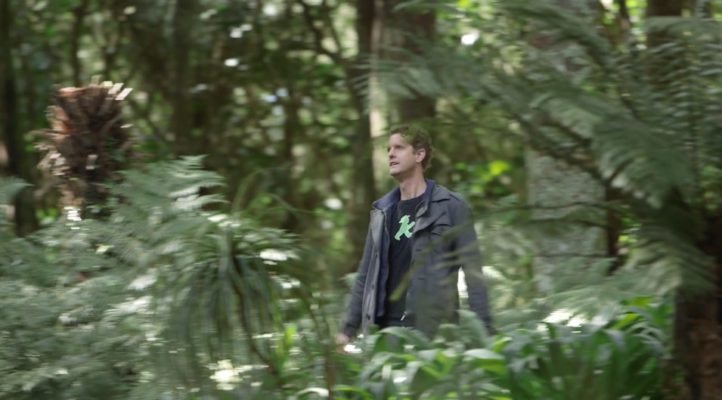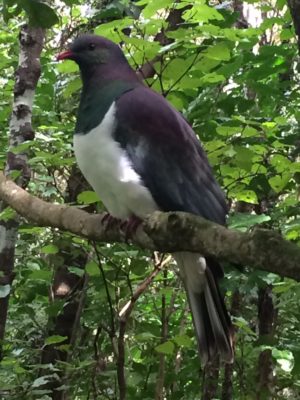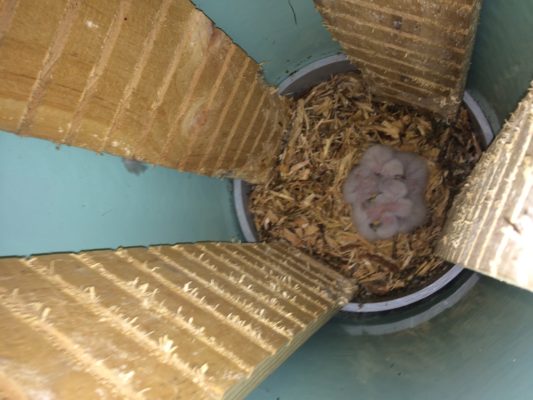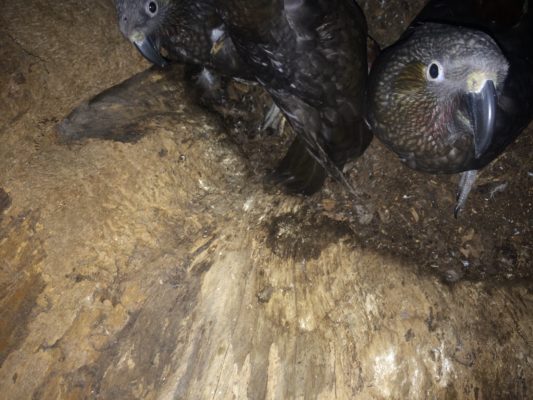Kelvin Hastie describes himself as a positive person. He doesn’t do negativity – and lately he’s had plenty to feel positive about. “The other day I was in a reserve and I saw seven kakariki in one totara. I could hear others nearby. There were about 10 kakariki in one spot. Kakariki are doing really well in Crofton Downs and surrounds,” he says. “And tui are dripping off the trees.”
Kelvin has become one of the Wellington suburb’s better-known residents since instigating ‘Predator Free Crofton Downs’ and helping to create New Zealand’s first predator-free suburb. Around 140 households in Crofton Downs now have a trap in their backyard and locals are noticing a huge difference in birdlife as a result.


At 1900 square metres, Kelvin’s own backyard is slightly larger than the average and, like his neighbours, he’s loving the changes he’s seeing.
“Every year tui nest in my backyard and often kereru nest there as well. People are saying it’s the first time they’ve ever seen juvenile tui – and they’re seeing them in their backyard! The other morning I walked down my driveway and within 30 seconds I heard kakariki, kaka, tui, fantails. Piwakawaka/fantails are a good indicator species for us and people are saying they have piwakawaka on their property some for the first time, some after 35 years living there. A fantail came into my house twice recently, getting the houseflies.”
This year Kelvin has located five kaka nests in Crofton Downs. (Okay, a couple were just a few metres over the official suburb boundary.) He’s been keeping an eye on them over the nesting season and reckons 19-20 kaka chicks have fledged successfully. The first known successful nests outside of the Zealandia Sanctuary occurred four breeding seasons ago in Crofton Downs.

“The nests were in reserves, but they were literally about 20 metres from people’s backyards.”
Crofton Downs even has a local falcon-karearea.
“The suburb is surrounded by reserves,” Kelvin explains. “There’s one on every side. It’s hilly in parts with rivers and streams. There’s remnant forest with mature rata and a 500-year-old rimu in nearby Otari Wilton Bush. It’s really rewarding to help protect it in partnership with other groups.”
For the last two years, Kelvin has also been helping other suburbs – around 40 groups now exist across Wellington – to get their residents trapping too.
“It involves our neighbouring suburbs. In our area there are about 2,500 backyard trappers over an area of about 4000 hectares. I think that makes it the densest trapping grid in the country!”
Kelvin reckons keeping things simple is the key to backyard trapping initiatives.
“The idea at the start was for people to have a rat trap in their backyard. It’s a simple way to help – not a big tax on your life – not a life-changing event. We stay in touch with people and talk as a community on a Facebook page. We gave everyone a mousetrap at Christmas to put in the tunnel behind the rat trap, because once the rats are gone, people start noticing mice more.”
The Crofton Downs trapping community continues to grow.
“New people move into the suburb and more join up. They email asking for a trap.”

Once predator numbers get really low, Kelvin reckons other aspects recorrect themselves very quickly. Nature finds its balance again.
“There’s been an explosion of butterflies this year – monarchs and admirals. I don’t know if butterflies (or caterpillars) are predated or if it’s a response to the weather.”
Once people start to get involved and enjoy the increased birdlife, Kelvin finds they often want to do more without any prompting.
“The birds belong to us all – they’re there for all to see. It’s a natural progression. A lot of people are sugar-feeding birds and lizards in their gardens. I’m now planting a lot more kowhai, for example.”
The group also continues to expand well into the rural zone, in part to create a barrier to reinvasion.
“We’ve had two years with no stoats, but have still carried on the protection for kaka. Then in the last 4 months we’ve had 13 stoats. In the last month we’ve caught 18 hedgehogs in reserves. It’s been a hot year – a mast year.”

Kelvin and the team will be monitoring for rats and other predators again soon too.
“We monitor every May – it’s the rattiest month. Last year we had 1 chew over the 130 hectares core area. I put a trap out and got three rats and there’s been nothing since then.”
Lately Kelvin as also been working with the Predator Free Wellington project group comprised of the Next Foundation, Greater Wellington Regional Council and Wellington City Council, sharing what he’s learnt from Crofton Downs as more and more suburbs across the Wellington region are primed to get involved.
“The project is ready to go,” he says. “It’s now close to being consulted in Wellington’s long-term plan. Mayor Justin Lester and Andy Foster, the councillor who holds the Predator Free Wellington portfolio, have shown a lot of support. We currently have 5000 households trapping in Wellington and another 1000 in Porirua. The next goal is to have 12,000 households trapping in Wellington,” he says.
All in all, it’s been a busy few years and now Kelvin, along with trappers all across Crofton Downs and other suburbs, are looking to reap the rewards.
“So much has happened in 3 years! It’s been an overwhelming, all-positive journey and a lot of fun! It’s an ongoing legacy,” Kelvin says, with well-earned satisfaction and pride.

